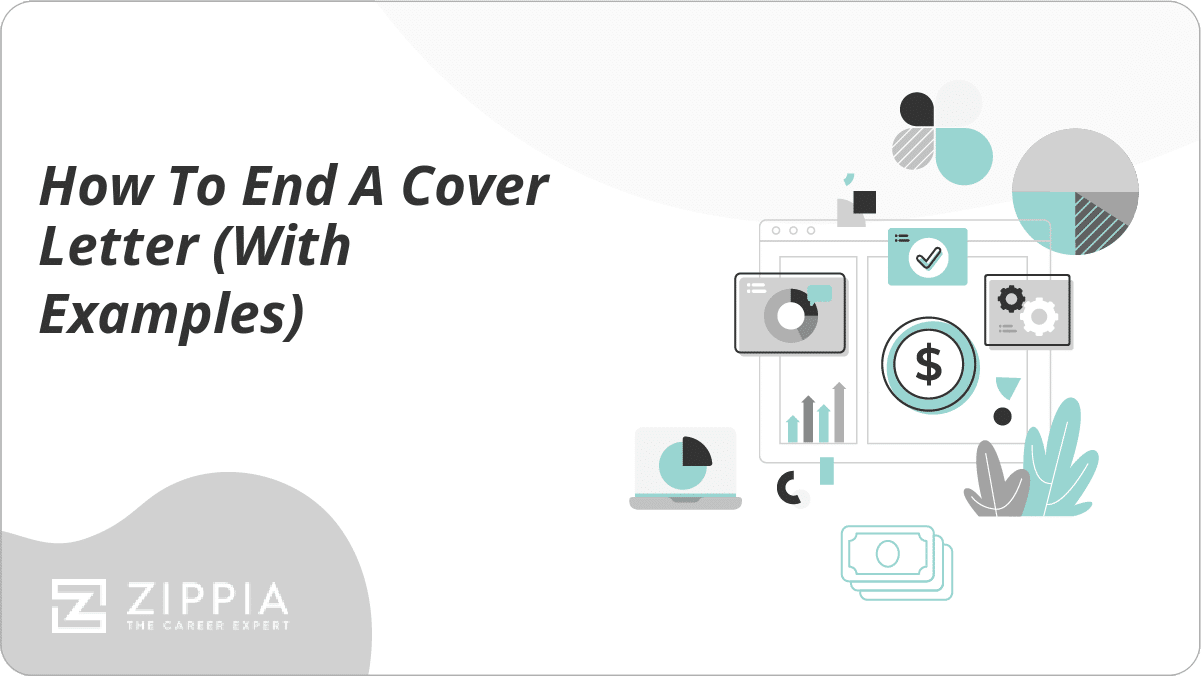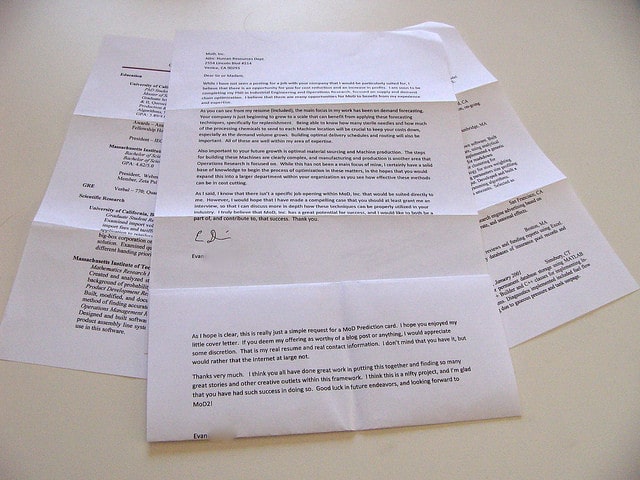- Cover Letter Basics
- Cover Letter Examples
- Cover Letter Examples
- Best Cover Letters
- Cover Letter For Internship
- General Cover Letter Templates
- Career Change Cover Letter
- Promotion Cover Letter
- College Student Cover Letter
- Entry Level Cover Letter
- Legal Cover Letter
- Creative Cover Letter
- Cover Letter For Government Job
- Cover Letter With No Experience
- Short Cover Letter Examples
- How To Send An Email Cover Letter
- How To Write A Cover Letter For A Job With No Experience In That Field
- Cover Letter Format
- Special Sections
Find a Job You Really Want In
- What Is A Font and Why Does It Matter in a Cover Letter?
- Picking an Appropriate Font Size for a Great Cover Letter
- Personalize Your Font Selection
- Including White Space
- Email Cover Letters
Your job application’s cover letter is the first impression your employer has of you and your work ethic when applying for a job. That’s why attention to detail when you write a cover letter is incredibly important to emphasize that you are the ideal candidate.
One of the first things to focus on is what kind of font or type style to use.
It may seem simple enough, but choosing the right font can make or break your application.
There’s a wide variety of fonts, but each of them gives off a specific impression. For your cover letter, you’ll want to use a font style that’s clear and easy to read.
Choosing the right font can increase the readability of your cover letter and help your application appear more polished and detail-oriented. This ensures you’ll make the best impact possible.
What Is A Font and Why Does It Matter in a Cover Letter?
A font is a graphical representation of text referring to a specific weight, width, and style. To pick your cover letter’s font, you should first think about what your intention is for your letter. For cover letters, the main intention is for your words and message to do all the talking. This means the font should not be artsy, fun, or obscure. It should allow your words to be immediately legible.
Additionally, consider being consistent in your font choice for both your cover letter and resume. The stylistic consistency may seem like a small detail, but it allows for recruits or hiring managers to easily flow from one document to the next, without any distractions in the way.
Picking an Appropriate Font Size for a Great Cover Letter
The size of your font is equally as important as choosing the correct font for your cover letter. If the text of your letter is too small or visibly challenging, your application might be passed up for another candidate.
There are three general options when picking a font size, 10, 11, or 12. Your cover letter should always fit on one-page, so consider this when formatting your first draft. A smaller font is appropriate if it helps keep all of your text on one page. However, if your cover letter is on the shorter side, choosing font size 12 is equally as appropriate.
It’s also important to note that different fonts come in a variety of sizes.
Once your cover letter is written, spend some time on formatting to make sure it looks good and fits on one page. If you have already selected the smallest size and your copy bleeds into a second page, try adjusting the margins or see where you can cut to condense the letter.
Personalize Your Font Selection
While there is no science behind picking the perfect font, there are specific fonts that are highly regarded for their perception of being easily readable, professional, and clean. Below, we outline some of the best cover letter fonts to choose from.
-
Arial features crisp lines and no-frills. Being one of the most popular cover letter fonts in the world, it’s also beneficial as the standard font for Microsoft Word and Google Docs. There’s a good chance your recruiter or hiring manager has this font existing in their word processor of choice.
-
Avenir is a good way to be bold but without taking the risk. This font features playful curves that help liven up any piece of copy to stand-out in the best way possible. It’s a good choice if you are looking to get into the design space or any creative type of job.
-
Calibri was initially designed by Microsoft as a candidate to replace Times New Roman in Word. It’s a standard font usually found on resumes or cover letters. With its clean and simple typeface, it’s easily one of the most readable fonts out there. It’s both familiar and friendly, a great choice for any cover letter.
-
Cambria has a serif face and traditional design that makes it easy to read both in print or on the computer screen, even in low resolutions. The even spacing and proportions make this an ideal choice for cover letters.
-
Garamond is a more delicate font, but with a classic serif form. Based on sixteenth-century designs, the Garamond style typefaces are perfect for both print and digital cover letters readability.
-
Georgia is a popular font developed by Microsoft. The serif typeface is both elegant and legible, with a mixture of both thick and thin strokes. This font is also used by Georgiacompanies in their branding, such as Amazon and the New York Times.
-
Helvetica is one of the most widely used sans-serif fonts in the world. Its neo-grotesque design was first brought to popularity by Swiss designers. Its neutral and clean look has made it a top choice for many businesses.
-
Times New Roman is the most traditional font of all. It is popular for most job seekers with its simple and elegant design. Keep in mind that since this is one of the most common resume and cover letter fonts, it’s not something to use if you’re looking to be unique. But that’s not to say it’s not a great choice. This is a safe and easy font choice for your cover letter.
-
Trebuchet MS is a great font choice if you are looking to fill a little extra space on your cover letter. Being a bit broader with thicker lines, this font will fill the page and allow for easy readability. It’s also a common font found in most word processors and Google Docs.
-
Verdana was initially designed to be readable in small sizes and on low-resolution screens, making it perfect if you need to use a smaller font size. It has a large x-height with wide proportions and letter-spacing to allow for easy legibility.
Going with one of the listed fonts for your cover letter and resume puts you in a good place for the formatting of your cover letter. As with many things, font choice is subjective, and you should make the choice you feel most comfortable with.
The last thing to be mindful of is how many fonts you choose to use for your cover letter.
Since there are a few different pieces to a cover letter, you may be tempted to use different fonts for headers, introductions, or conclusions. However, it’s good practice to only use one font for your cover letter. Maintaining this consistency ensures a smooth reading process for your recruiter or hiring manager.
Including White Space
When formatting your cover letter, it’s always important to remember that there is a significant amount of space required at the top of your letter. Additionally, you should leave white space between each paragraph and each new section of the cover letter.
Usually, word processors have templates that you can use to make sure you properly space your cover letter. Again, don’t forget that your entire cover letter should fit on a single page, so it’s important to take some time to play with the formatting once you are done writing your letter. Perfecting your formatting ensures you will make a stellar first impression.
Email Cover Letters
The best practices outlined in this article are mostly for cover letters that are in hard-copy or emailed as a Word document or PDF attachment. If your job application instructs you to include your cover letter in the body of the email, you might be tempted to copy, paste, and send. However, you must be mindful of how the formatting shifts when you copy and paste things into an email, making it tricky for the hiring manager or recruiter to read. Be sure you either fix the formatting in the body of the email or copy and paste it as plain text directly into the email.
The importance of font selection in your cover letter is just as significant as what information you include. Always remember to double-check your formatting selections. Worried you may be making more cover letter mistakes? Here are 15 mistakes you may not realize you’re making.
- Cover Letter Basics
- Cover Letter Examples
- Cover Letter Examples
- Best Cover Letters
- Cover Letter For Internship
- General Cover Letter Templates
- Career Change Cover Letter
- Promotion Cover Letter
- College Student Cover Letter
- Entry Level Cover Letter
- Legal Cover Letter
- Creative Cover Letter
- Cover Letter For Government Job
- Cover Letter With No Experience
- Short Cover Letter Examples
- How To Send An Email Cover Letter
- How To Write A Cover Letter For A Job With No Experience In That Field
- Cover Letter Format
- Special Sections





